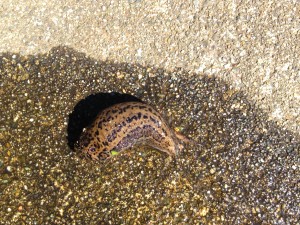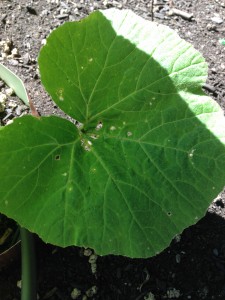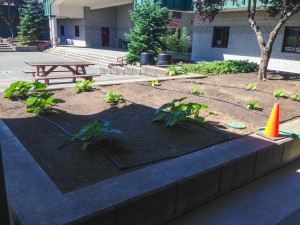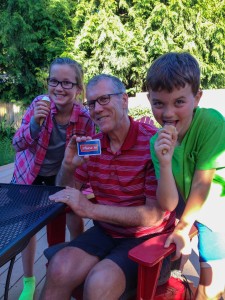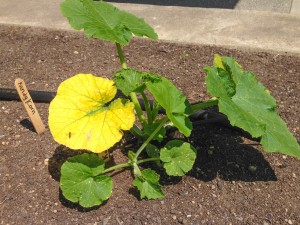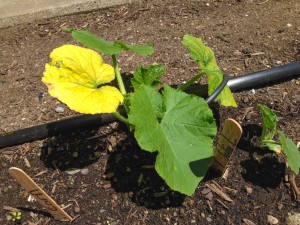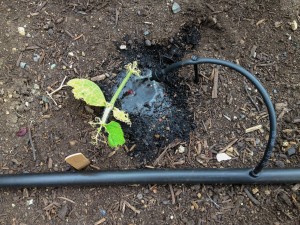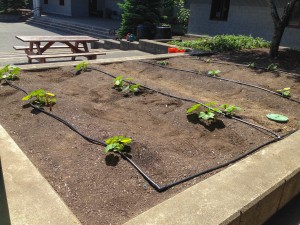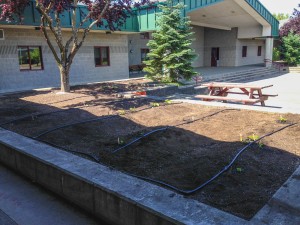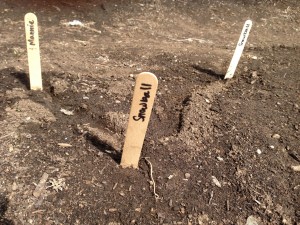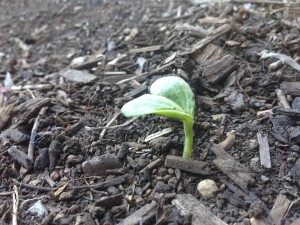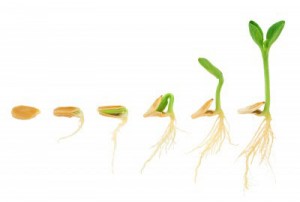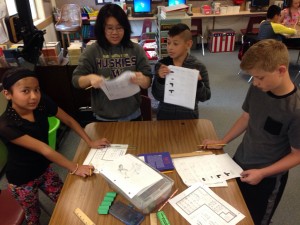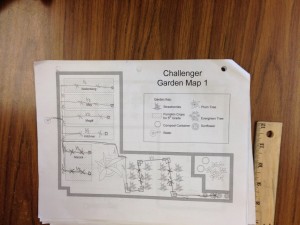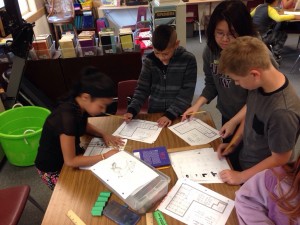The Pumpkin Plants Are Flowering
Here’s a quick update on the pumpkin patch at our school. I checked the plants out yesterday and noticed a few things. First, The plants have all grown. Also, they seem to be more green. Some of the leaves in the past weeks have been yellow. I think they might have been watered too much. I altered this a bit for both gardens. Hopefully, that helped. I still see some yellow discoloration in the leaf of some of the plants, but not much. I have not seen as many leaves being eaten. I put some slug bait down last week and that seemed to keep the slimy guys off for now. Here’s a photo of one such creature I caught in our garden.
A new pest arrived this week and has been munching little holes in the leaves of the plants. Here’s a photo of a beetle I found on one of the leaves. I’m not sure if it’s the culprit. Again, I’ll keep an eye on it.
I found that the growth is still better in Garden 1 compared to Garden 2. If you look carefully in the Garden 1 photo you can see some yellow coloring. Those are the flowers that are starting to bloom. Remember that the pumpkin fruit start as a flower. Once it gets pollinated it will start to make the pumpkin fruit. Do you recall how they get pollinated? See the photos below.
Lastly, I observes some interesting color on the leaves of one of the pumpkins in the 5 gallon buckets. I’m not sure what it is exactly. It might be nothing, or it could be the start of some sort of disease. I’ll check back on it next week.
The courtyard to the school is generally closed during the month of July, but it might start opening up in August. Stop by and check if you have time to see how the plants are progressing in person.
